Kicking It in Vienna: A Soccer Lover's Journey
Join us for a captivating exploration of Vienna's iconic landmarks, tailored for soccer enthusiasts in this engaging free walking tour.
Time
5 Hours
Stops
8 Places
Distance
5.6 km
Stephansdom (St. Stephen's Cathedral)
Begin your tour at the heart of Vienna with the iconic Stephansdom, a masterpiece of Gothic architecture that has stood for centuries.
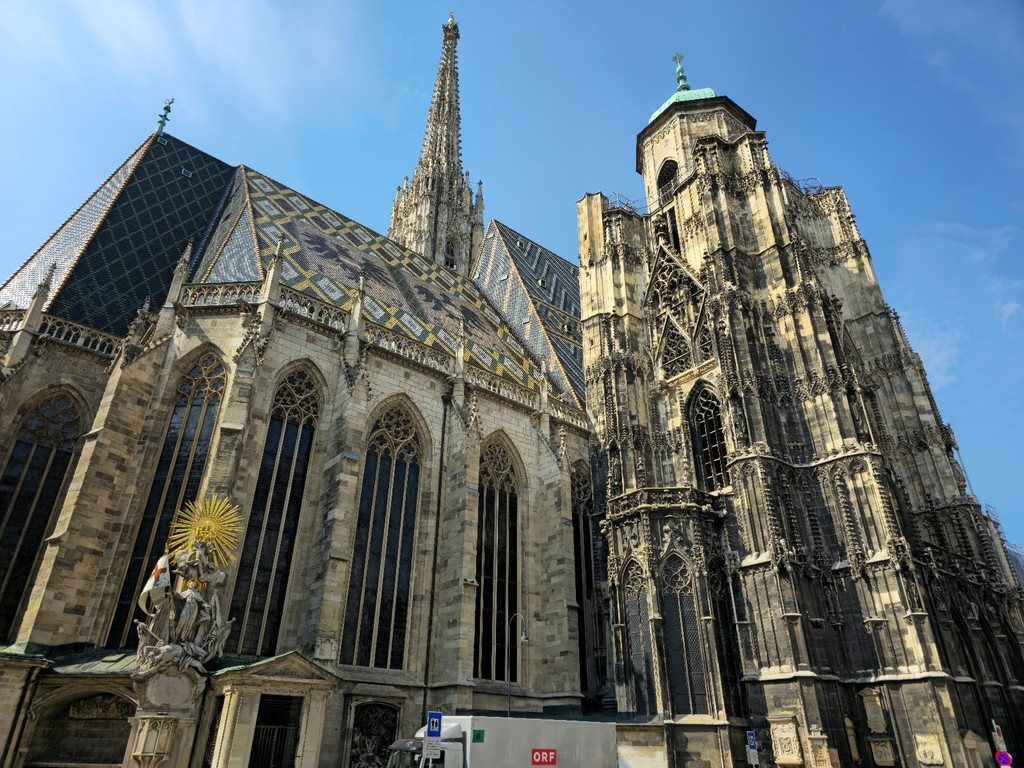
Stephansdom (St. Stephen's Cathedral) (Source: Google Maps)
Stephansdom, or St. Stephen's Cathedral, is the most important religious building in Vienna and a symbol of the city's history. This Gothic masterpiece has been an architectural marvel since its construction began in the 12th century. Its stunning façade, featuring intricate carvings, and the towering south tower, which stands at 136 meters, showcase the ingenuity of medieval architects. The cathedral is not only a place of worship but also a cultural hub, hosting numerous concerts and events throughout the year. The remarkable tiled roof, adorned with colorful patterns, adds to its charm, while the catacombs below reveal a fascinating glimpse into the city's past. Visitors can also climb the tower for breathtaking views of Vienna's skyline, making it a must-see landmark for anyone exploring the city.
Mozarthaus Vienna
Just a short walk away, explore the life and works of the musical genius Wolfgang Amadeus Mozart at his former residence.
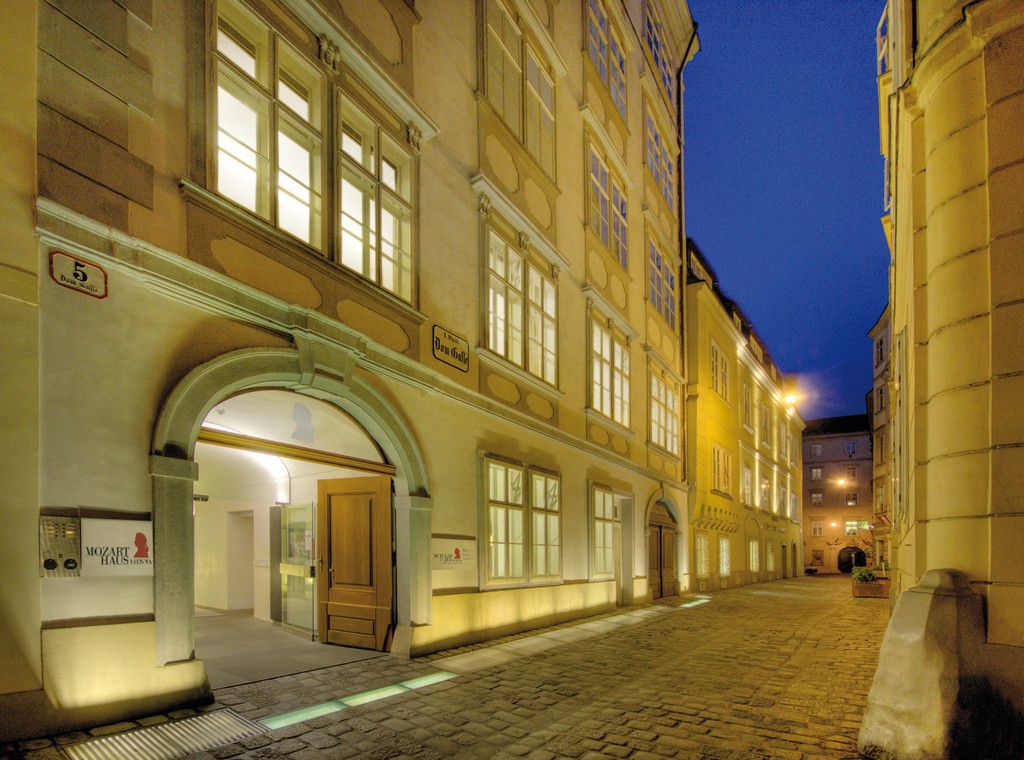
Mozarthaus Vienna (Source: Google Maps)
Mozarthaus Vienna is the former residence of Wolfgang Amadeus Mozart, one of the most influential composers in Western music history. This historic building, where Mozart lived from 1784 to 1787, offers an intimate look into his life and work. The museum showcases original manuscripts, letters, and period instruments, providing insight into the creative process of this musical genius. Visitors can explore the rooms where he composed some of his most famous works, including 'The Marriage of Figaro' and 'Don Giovanni'. The museum also features exhibitions about the cultural context of Mozart's time, highlighting the vibrant musical scene of 18th-century Vienna. Its rich history and dedication to preserving Mozart's legacy make it an essential stop for music lovers and anyone interested in Vienna's cultural heritage.
Stadtpark
Enjoy a leisurely stroll through Stadtpark, famous for its beautiful landscapes and the golden statue of Johann Strauss II.
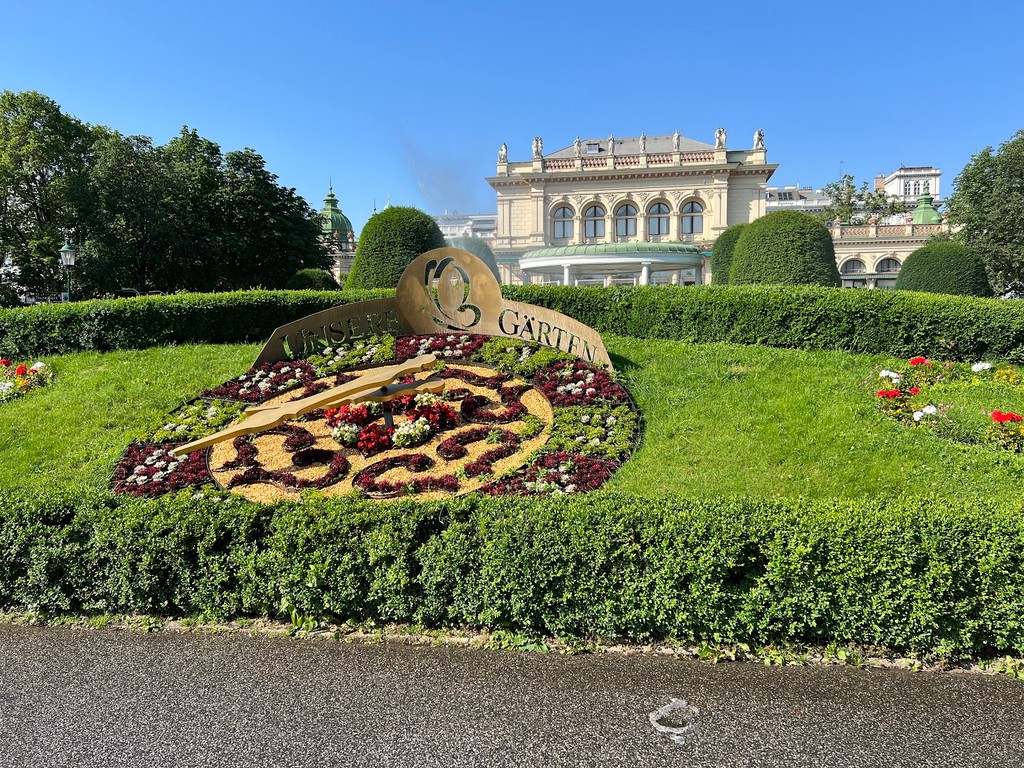
Stadtpark (Source: Google Maps)
Stadtpark, or City Park, is a beautiful green space in the heart of Vienna, renowned for its stunning landscapes and recreational opportunities. Established in 1862, it was one of the first public parks in the city and is home to numerous statues and monuments, including the famous golden statue of Johann Strauss II. The park's design incorporates lush gardens, winding paths, and serene ponds, making it a perfect retreat for locals and tourists alike. Visitors can enjoy leisurely strolls, picnics, or simply relax on the benches while soaking in the atmosphere. The park also hosts various cultural events and concerts, especially during the summer months, enhancing its role as a vibrant community space. Its picturesque scenery and historical significance make Stadtpark a delightful stop on any tour of Vienna.
Heuriger am Belvedere
Take a break and indulge in traditional Viennese snacks and drinks at this charming Heuriger near the Belvedere.
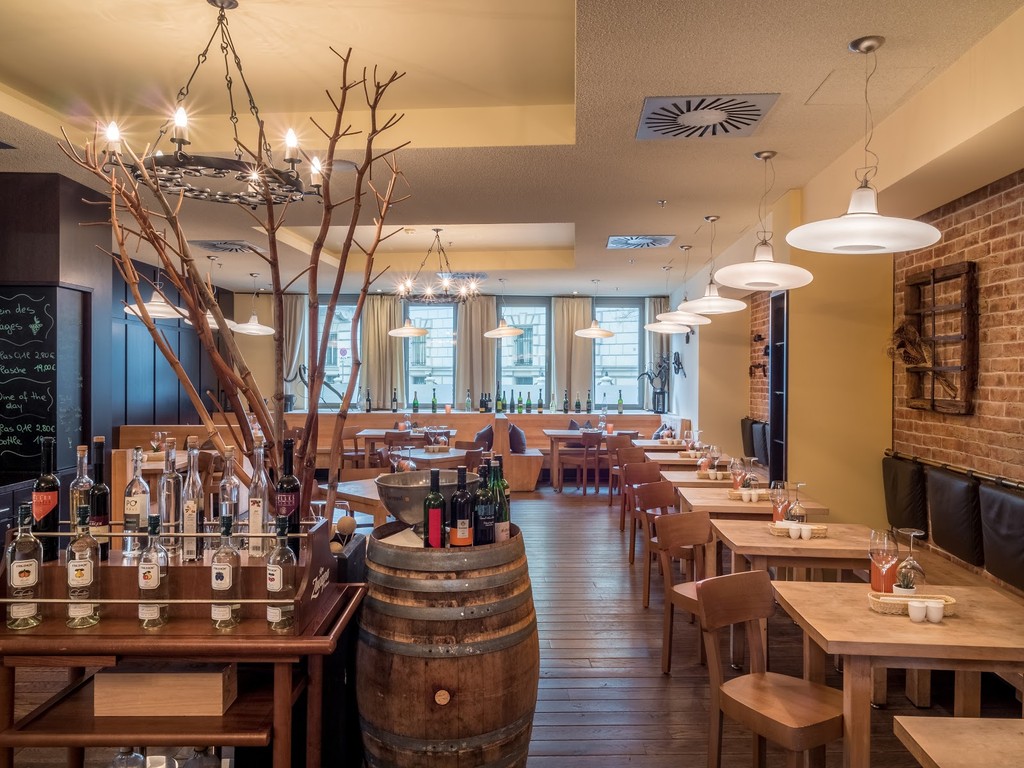
Heuriger am Belvedere (Source: Google Maps)
Belvedere Palace
Continue to the magnificent Belvedere Palace, housing an impressive collection of Austrian art, including works by Gustav Klimt.
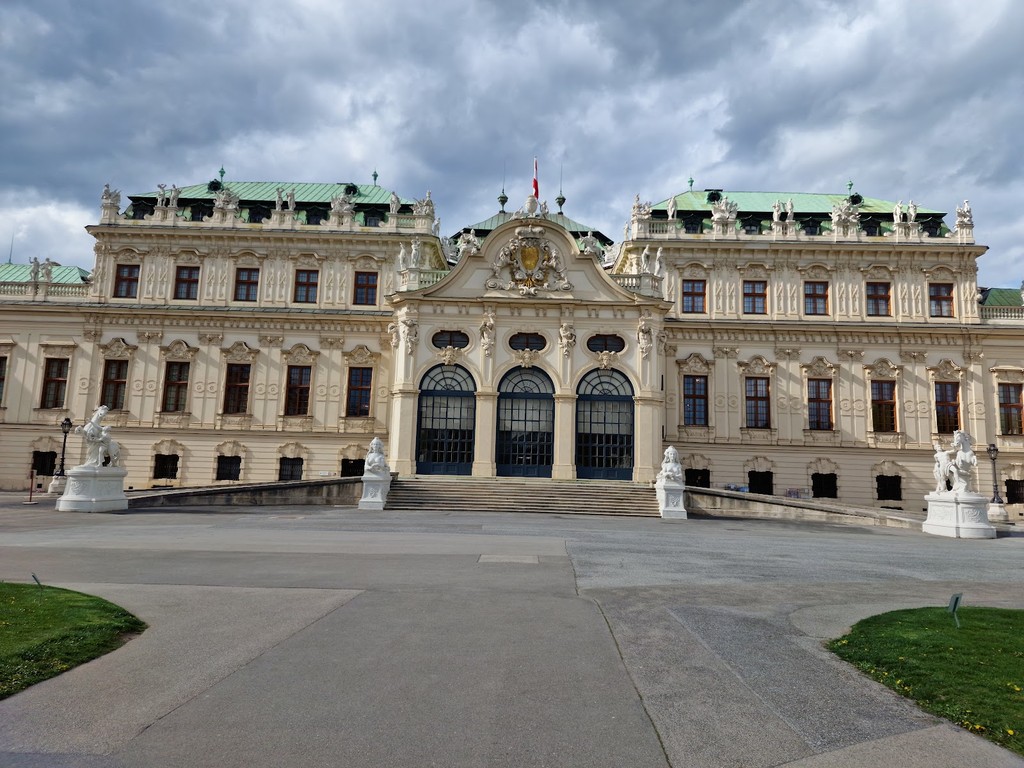
Belvedere Palace (Source: Google Maps)
Belvedere Palace is a stunning baroque palace complex that serves as both a historical landmark and an art museum. Built in the 18th century for Prince Eugene of Savoy, the palace consists of two main buildings: the Upper Belvedere and the Lower Belvedere, set amidst beautifully landscaped gardens. The Upper Belvedere houses an impressive collection of Austrian art, including masterpieces by Gustav Klimt, Egon Schiele, and Oskar Kokoschka. Visitors can admire iconic works like 'The Kiss' and explore the extensive galleries that showcase the evolution of Austrian art from the Middle Ages to the present. The palace's architecture is equally remarkable, featuring ornate frescoes, grand staircases, and opulent rooms that reflect the grandeur of the baroque era. The surrounding gardens, with their fountains and sculptures, provide a picturesque setting for leisurely walks and stunning views of the city.
Naschmarkt
Experience the vibrant atmosphere of Vienna's most famous market, offering a variety of fresh produce, street food, and local delicacies.
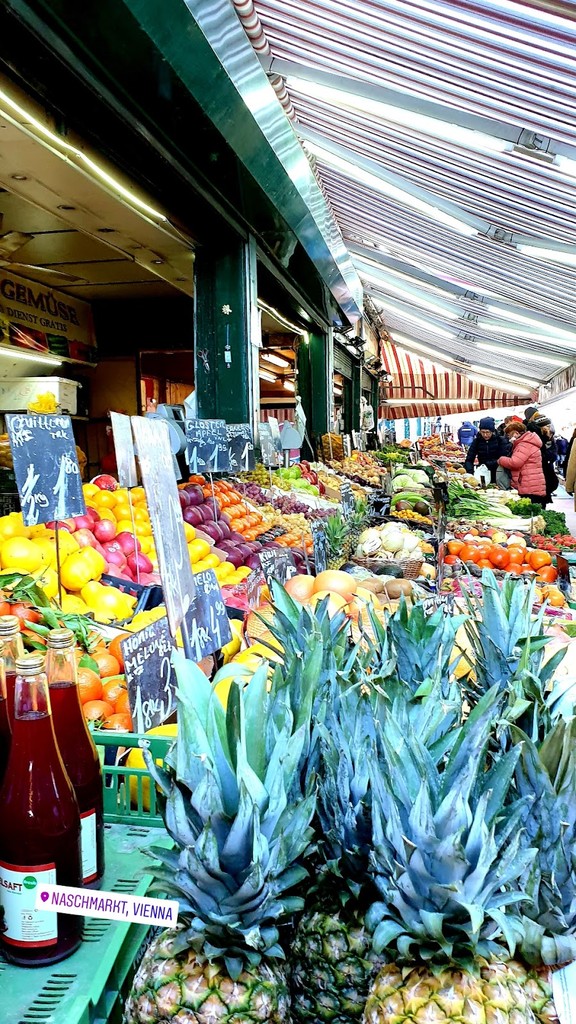
Naschmarkt (Source: Google Maps)
Naschmarkt is Vienna's most famous market, a bustling hub of culinary delights and vibrant culture. Spanning over a kilometer, the market features a diverse array of stalls offering fresh produce, spices, street food, and local delicacies. Established in the 16th century, Naschmarkt has evolved into a popular destination for both locals and tourists, showcasing the multicultural influences that shape Vienna's culinary scene. Visitors can sample traditional Viennese dishes, international cuisine, and gourmet treats from various vendors. The lively atmosphere is enhanced by the colorful displays and the sound of vendors calling out to passersby. In addition to food stalls, Naschmarkt hosts restaurants, cafés, and shops, making it a perfect spot for a leisurely lunch or a casual dining experience. The market's rich history and vibrant ambiance make it a must-visit for anyone looking to experience the flavors of Vienna.
Vienna Secession
Admire the unique architecture and contemporary art exhibits at the Vienna Secession, an artistic movement founded in 1897.
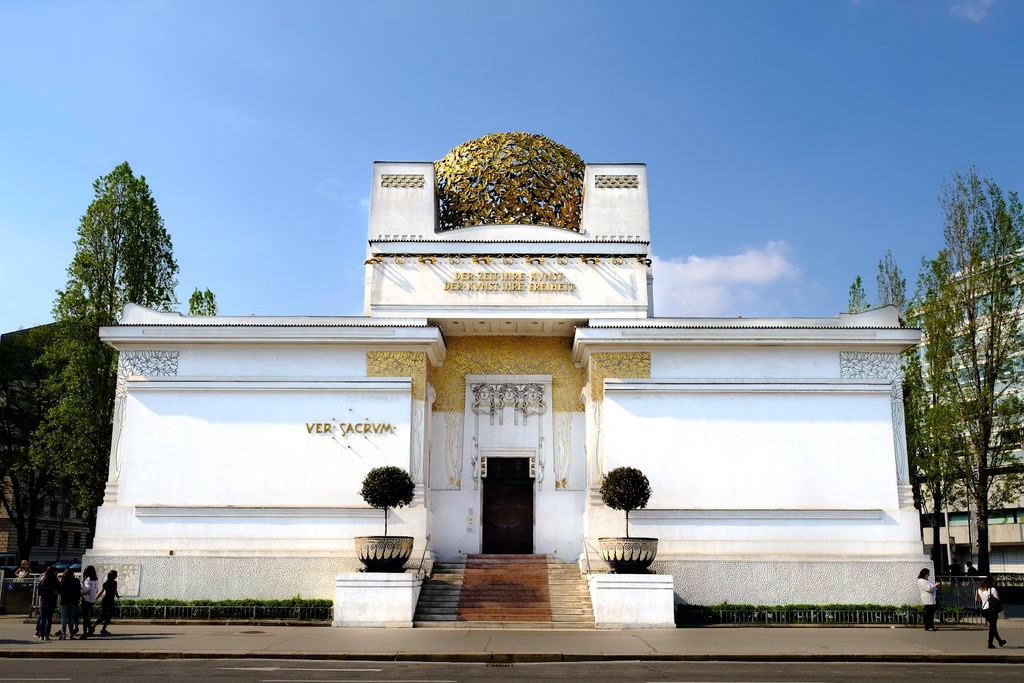
Vienna Secession (Source: Google Maps)
The Vienna Secession is an iconic building and cultural institution that represents the artistic movement founded in 1897 by a group of artists, including Gustav Klimt and Joseph Maria Olbrich. The building itself is a striking example of modern architecture, characterized by its distinctive golden dome and white façade. The Secession movement aimed to break away from traditional artistic conventions and promote innovative ideas in art and design. Inside, visitors can explore rotating exhibitions featuring contemporary art, design, and architecture, reflecting the spirit of the movement. The building also houses Klimt's famous Beethoven Frieze, a monumental artwork that celebrates the composer’s legacy. The Vienna Secession is not just a museum but a symbol of artistic freedom and creativity, making it an essential stop for those interested in the evolution of modern art.
Karlsplatz
Conclude your tour at Karlsplatz, a lively square surrounded by stunning architecture and cultural institutions.
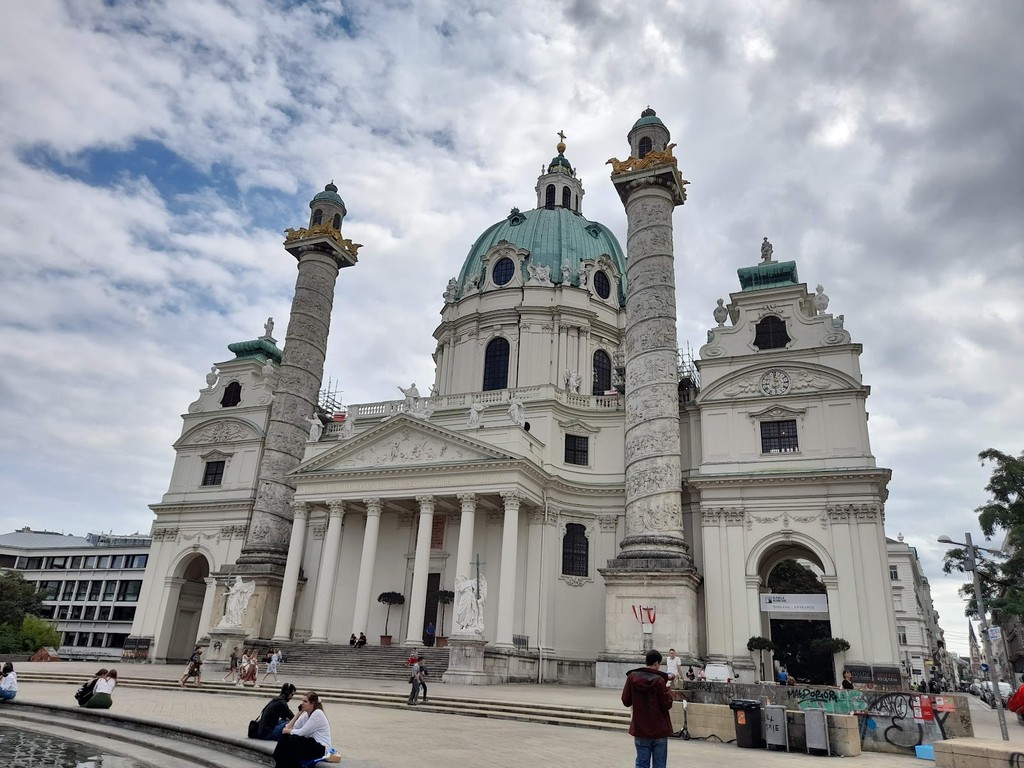
Karlsplatz (Source: Google Maps)
Karlsplatz is a vibrant public square in Vienna, surrounded by stunning architecture and cultural institutions. At its center stands the imposing Karlskirche, a baroque church that is one of the city's most significant landmarks. Built in the early 18th century, the church features a stunning dome and impressive frescoes that attract visitors from around the world. The square is also home to the Vienna University of Technology, showcasing the blend of education and culture in the area. Karlsplatz serves as a gathering place for locals and tourists alike, hosting various events, markets, and concerts throughout the year. The surrounding gardens and fountains provide a peaceful retreat amidst the bustling city, while the square's lively atmosphere makes it a perfect spot to conclude a day of exploration in Vienna.

Your travels, your rules.
Create your own Free Walking Tours.
Set your preferences, distances and anything you want to do or see.
Completely free, no payment required.